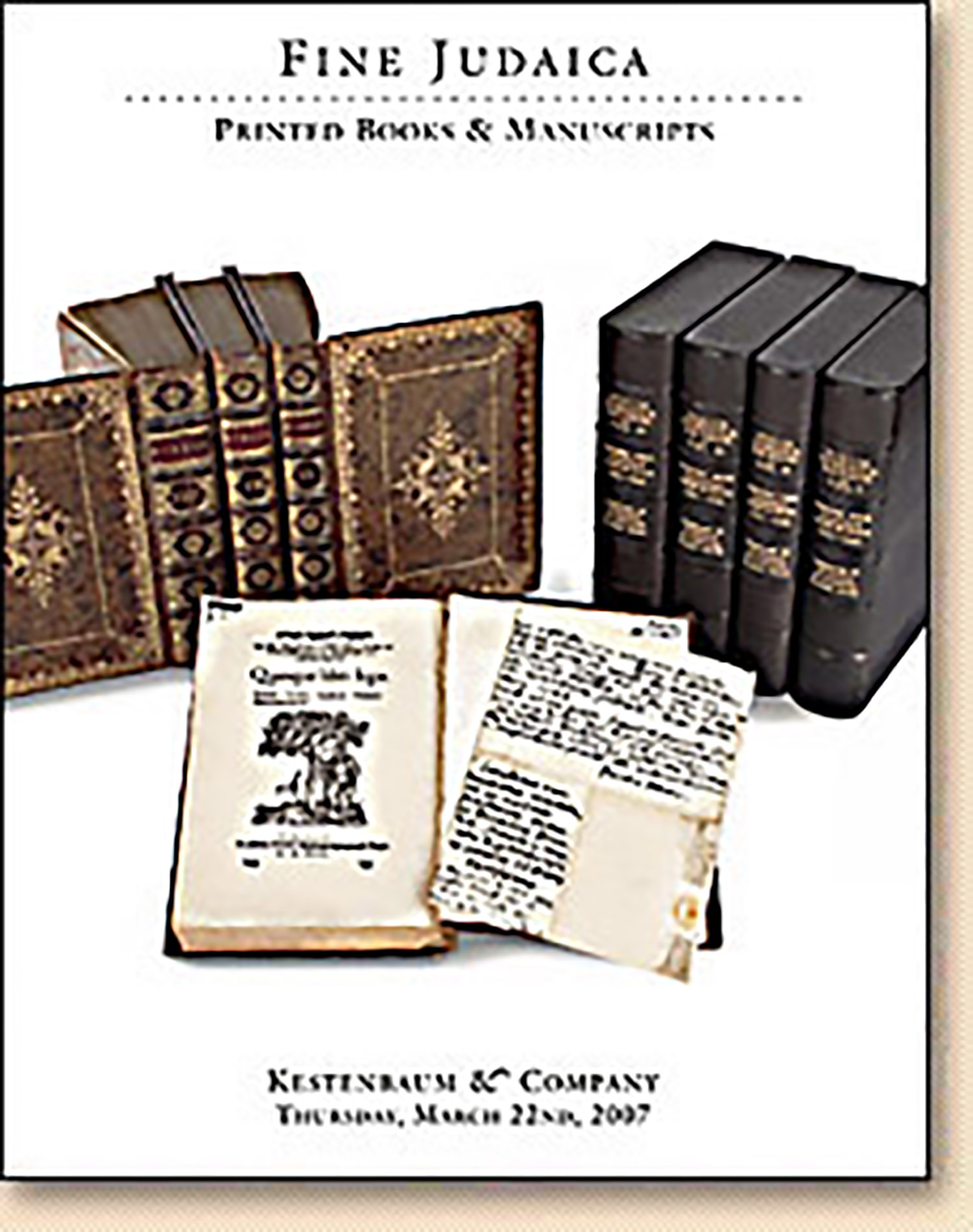Goraloth - Urim Ve-Tumim [“The Book of Lots”]

AUCTION 36 |
Thursday, March 22nd,
2007 at 1:00
Fine Judaica: Printed Books & Manuscripts
Lot 244
(KABBALAH)
Goraloth - Urim Ve-Tumim [“The Book of Lots”]
Yemen: 18th Century
Est: $4,000 - $6,000
A means of divination upon all the disquietudes of life.
Each page contains 144 squares identified by Hebrew letters, representing a stone of the Urim Ve’Tumim, the heavenly oracle worn by the High Priest in the Temple. Contains instructions as to which day of the month the “goral” will work and a prayer to be recited before using the lots: Proceed by opening a Bible and choosing certain letters, whereupon any number of matters might be resolved; whether to move to a new house, how to conquer ememies, find a wife, sire obedient children, and concerning matters of business, love, old age, sickness, etc.
It seems the book enjoyed great popularity. First printed in Dyhernfurth, Germany at the beginning of the eighteenth century by one “Abraham ben Abraham of Adrianople,” it went through several editions including Judeo-German and Judeo-Arabic versions. (There is a three-way disagreement whether the editio princeps is 1700 [Friedberg], 1721 [Ben Ya’akov], or 1728 [Vinograd]. See Vinograd, Dyhernfurth 141.)
Prof. Moshe Hallamish described a similar Yemenite manuscript of Goraloth Urim ve-Tumim in the Manfred Lehmann Collection, while discussing the various recensions of the Introduction (which provides the historical backdrop, however reliable that may be) in both the manuscript and printed versions. See Ohel Hayim, Vol. I [Kabbalistic Manuscripts] (1988), pp. 24-25, 313.
Our Introduction contains several lines lacking in Lehmann Ms. K-11:
“These are the Urim ve-Tumim employed in the Second Temple, composed by the Seventy Sages in the days of King Ptolemy. They wrote them in a large vellum book. In those days, only the privileged few could make use of them; they were not revealed to all of Israel. When the Greek persecution of the Jews began, the Jews were afraid lest they burn the books, so they hid them underground in Alexandria. There they remained for the next forty years until the persecution by Antiochus and his cohorts abated, at which time the books were brought from Alexandria to Eretz Israel. They remained in the common possession until the civil war between Antigonus and Hyrcanus, the two sons of King Alexander, whereupon, the elders of the generation hid the books in a cave in Tiberias. There they lay hidden for the longest time. During the Roman Era, the elders of the generation searched for the books, but were unable to locate them. They declared a fast and prayed until one elderly sage recalled that the book had been hidden in Tiberias. For the next several generations, the books were available for consultation, up until the time of the destruction of the Second Temple. Once again, the elders hid them in Tiberias. This time they remained hidden for 80 (!) years until an earthquake erupted in the Ishmaelite Era, necessitating their use. They were handed down generation after generation, coming into the possession of the Sages of the Talmud, even unto our own day…” (ff. 2r.-3r.)
